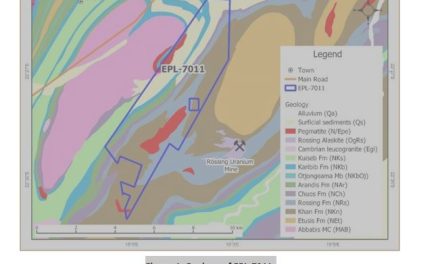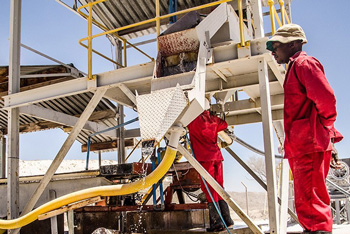
80kW photovoltaic solar plant inaugurated at Gobabis VTC

The Namibia Training Authority, together with the Ministry of Higher Education, Technology, and Innovation, inaugurated an 80kW photovoltaic solar plant at the Gobabis Vocational Training Centre (VTC) in the Omaheke region this week.
This installation, a ground-mounted 80kW system, covers the entire electricity demand of the centre, comprising three-phase equipment. The new plant should save the Gobabis VTC lots of money on electricity.
It has a backup generator that turns on automatically after 10 seconds if the power goes out. At maximum fuel capacity, the generator can supply all the electricity needed for up to 18 hours, including three-phase equipment.
Additionally, the installation works on this plant, which cost over N$4 million to build, is solely funded by the German Federal Ministry for Economic Cooperation and Development (BMZ) and began in February this year.
“The contractor, K-Hapu Holdings, established, leveled, and fenced the site. Installation started in March and included the mounting of concrete bases, trenching of cables, structure installation, and solar module fitting and wiring. By early May, work started to mount and install the backup generator and security surveillance system. Testing, commissioning, and handover concluded by the end of July,” said Jerome Mutumba, NTA Board Chairperson.
Mutumba continued: “To secure this installation, which comprises solar lights on the premises, 14 cameras have been installed and are monitored remotely from the guard house. Generation is monitored via a wireless module that captures and records daily outputs. The total cost of this single installation amounts to N$4,176,830. This includes the plant, cameras, solar lights, and other miscellaneous items like the fencing.”
He further emphasized that similar installations have been erected at the cluster of VTCs in northern Namibia.
Moreover, unlike the installations at these centres, funded by both the BMZ and the EU, this installation at Gobabis VTC is solely funded by the BMZ. This includes Eenhana VTC (Eenhana, Ohangwena), Valombola VTC (Ongwediva, Oshana), and Nakayale VTC (Outapi, Omusati).
“Yes, the initial costs were high. However, the main advantage of solar electricity is the cost-saving aspect over the long term. Furthermore, from a corporate social responsibility perspective, we can now generate our green electricity and operate in a manner that reduces our environmental impact and lowers our carbon footprint,” Mutumba asserted.
Muvatera Ndjoze-Siririka, MHETI Director: Technical and Vocational Education and Training, delivered remarks at the event on behalf of Hon Dr Itah Kandjii-Murangi, Minister of Higher Education, Technology, and Innovation.
“Installing photovoltaic plans at our public VTCs is but one single aspect of the comprehensive support over the years to our TVET sector, which to date has included funding to several physical infrastructure expansion projects at public VTCs, procurement of training equipment and tools, training of trainers, as well as the development of a wide range of industry-relevant TVET qualifications in economic priority areas such as agriculture, tourism and logistics,” according to Dr Kandjii-Murangi.
The minister further said that installing photovoltaic plants is a step in the right direction, with a wide range of benefits expected in the short to medium term, including minimal maintenance, reduced operational costs, decreased emissions of greenhouse gases, and decreased energy expenses.
She added that although relatively small in comparison with other major solar farms, such as the Ejuva One and Two plants outside Gobabis, these installations are contributing to the objective of increasing the proportion of renewable energy sources in Namibia’s energy mix.
“Namibia enjoys a very high number of annual sunshine hours and offers one of the highest solar energy yields in the world. Installing photovoltaic solar plants at some public VTCs is, therefore, an encouraging and heartening development. Such systems are perfect for Namibia’s arid environment because they are extremely durable and require little upkeep. Panels can last up to 25 years or more and are made to endure our extreme weather conditions like high winds and sandstorms,” she said.












































